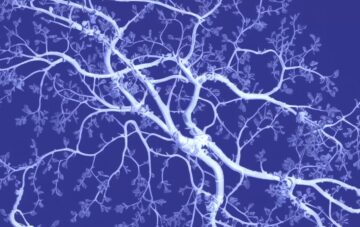Norma Clarke at Literary Review:
 Michel Pastoureau began his wonderful and widely translated series on the history of colours with Blue a quarter of a century ago. Black, Green, Red, Yellow and White followed and now here is a history of pink, which may not be ‘a color in its own right’ and for which neither Latin nor ancient Greek has a standard word (it was long regarded as a shade of red). Nevertheless, Pink is as sumptuous as its predecessors, printed on gorgeous glossy paper and written with impassioned scholarship.
Michel Pastoureau began his wonderful and widely translated series on the history of colours with Blue a quarter of a century ago. Black, Green, Red, Yellow and White followed and now here is a history of pink, which may not be ‘a color in its own right’ and for which neither Latin nor ancient Greek has a standard word (it was long regarded as a shade of red). Nevertheless, Pink is as sumptuous as its predecessors, printed on gorgeous glossy paper and written with impassioned scholarship.
When Isaac Newton broke white light down into coloured rays in 1666, he did not find pink. Orange and purple were there, along with red, yellow, green and blue, so for scientists those were the true colours. Yet pink was observable in nature – in plants, on the feathers of animals, in minerals and in the sky. Pink had begun to appear in dyes and paints in the 14th century – relatively late compared to other colours – and it rapidly became fashionable. A unique document, Prammatica del vestire, has survived to tell us about the wardrobes of all women of the wealthy classes living in Florence between 1343 and 1345.
more here.
Enjoying the content on 3QD? Help keep us going by donating now.

 For the family, withdrawing or withholding life-sustaining treatments from a dying loved one, even if doctors advise that the treatment is unlikely to succeed or benefit the patient, can be overwhelming and painful. Studies show that their stress can be at the
For the family, withdrawing or withholding life-sustaining treatments from a dying loved one, even if doctors advise that the treatment is unlikely to succeed or benefit the patient, can be overwhelming and painful. Studies show that their stress can be at the  D
D The non-modest mission of her sprightly
The non-modest mission of her sprightly  During the last year of his life, Malcolm organized and spoke with increasing clarity on questions that remain central for working people today.
During the last year of his life, Malcolm organized and spoke with increasing clarity on questions that remain central for working people today. Tobias Rees, founder of an AI studio located at the intersection of philosophy, art and technology, sat down with Noema Editor-in-Chief Nathan Gardels to discuss the philosophical significance of generative AI.
Tobias Rees, founder of an AI studio located at the intersection of philosophy, art and technology, sat down with Noema Editor-in-Chief Nathan Gardels to discuss the philosophical significance of generative AI. In “Seven Deadly Sins,” Leschziner, a neurologist and sleep physician, interrogates the evolutionary, neurological, and psychological underpinnings of the seven greatest transgressions in Dante’s “Inferno”: wrath, lust, pride, greed, envy, sloth, and gluttony. He concludes that these so-called sins are inextricably interwoven with the experience of being a person, and that to understand them is “to gain insights into why we do what we do: the biology of being human.”
In “Seven Deadly Sins,” Leschziner, a neurologist and sleep physician, interrogates the evolutionary, neurological, and psychological underpinnings of the seven greatest transgressions in Dante’s “Inferno”: wrath, lust, pride, greed, envy, sloth, and gluttony. He concludes that these so-called sins are inextricably interwoven with the experience of being a person, and that to understand them is “to gain insights into why we do what we do: the biology of being human.” It is a multipolar world, with China, Russia, India, Turkey, Brazil, South Africa, and the Gulf states challenging the old order, alongside other emerging powers demanding a greater voice in shaping the rules of the international system. Meanwhile, belief in “universal values” and the idea of an “international community” has waned, as many point to the hypocrisy of rich countries hoarding vaccines during the COVID-19 pandemic and the response to the Ukraine war compared to the failures to act in response to humanitarian crises in Gaza, Sudan, and many other places.
It is a multipolar world, with China, Russia, India, Turkey, Brazil, South Africa, and the Gulf states challenging the old order, alongside other emerging powers demanding a greater voice in shaping the rules of the international system. Meanwhile, belief in “universal values” and the idea of an “international community” has waned, as many point to the hypocrisy of rich countries hoarding vaccines during the COVID-19 pandemic and the response to the Ukraine war compared to the failures to act in response to humanitarian crises in Gaza, Sudan, and many other places. Most work using
Most work using